Using Less Energy Is the Most Renewable Energy There Is
How one neigbhorhood in Pittsburgh could help the city meet its climate goals
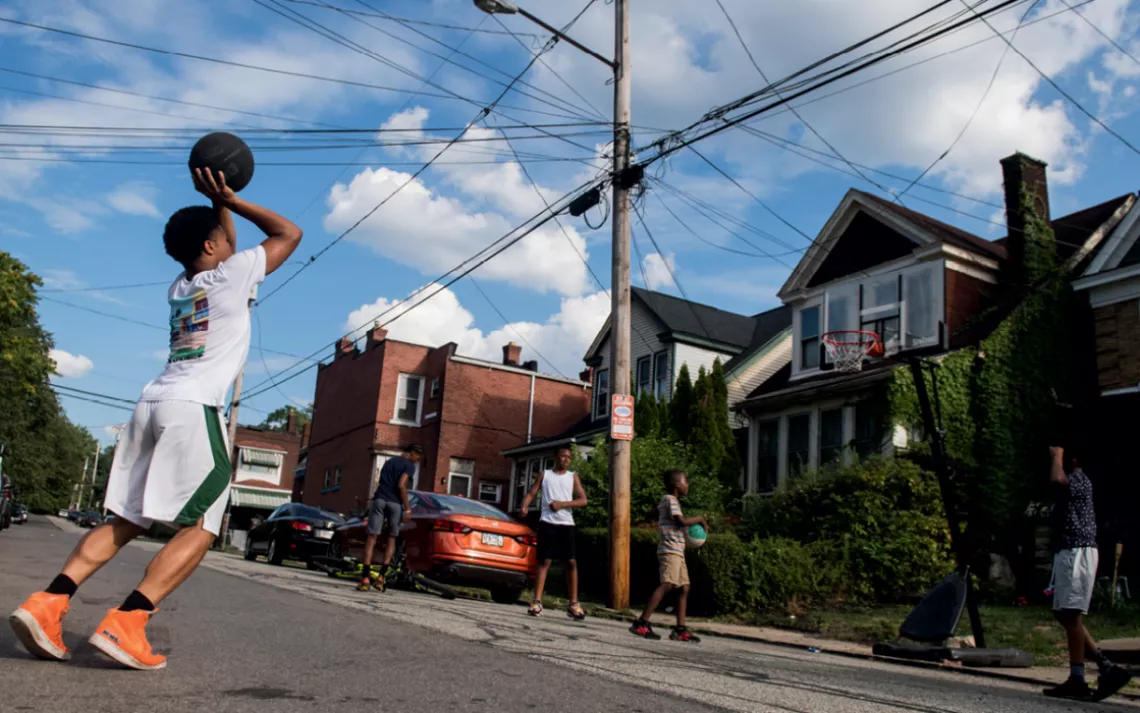
Homewood kids shooting hoops.
|Photos by Nate Smallwood
FIVE OR SIX YEARS AGO, ZINNA SCOTT noticed that one of the streetlights between her house and the bus stop was out. She was not pleased. Over a quarter of the 6,500 people in Pittsburgh's Homewood neighborhood make less than $10,000 a year. That means that the average resident needs to take the bus, and they need to feel comfortable doing so. There are plenty of other things to worry about when you're trying to survive on less than $10,000 a year.
First, Scott called the city controller. The controller told her that if she wanted to get the light fixed, she needed to call Duquesne Light Company, the local utility.
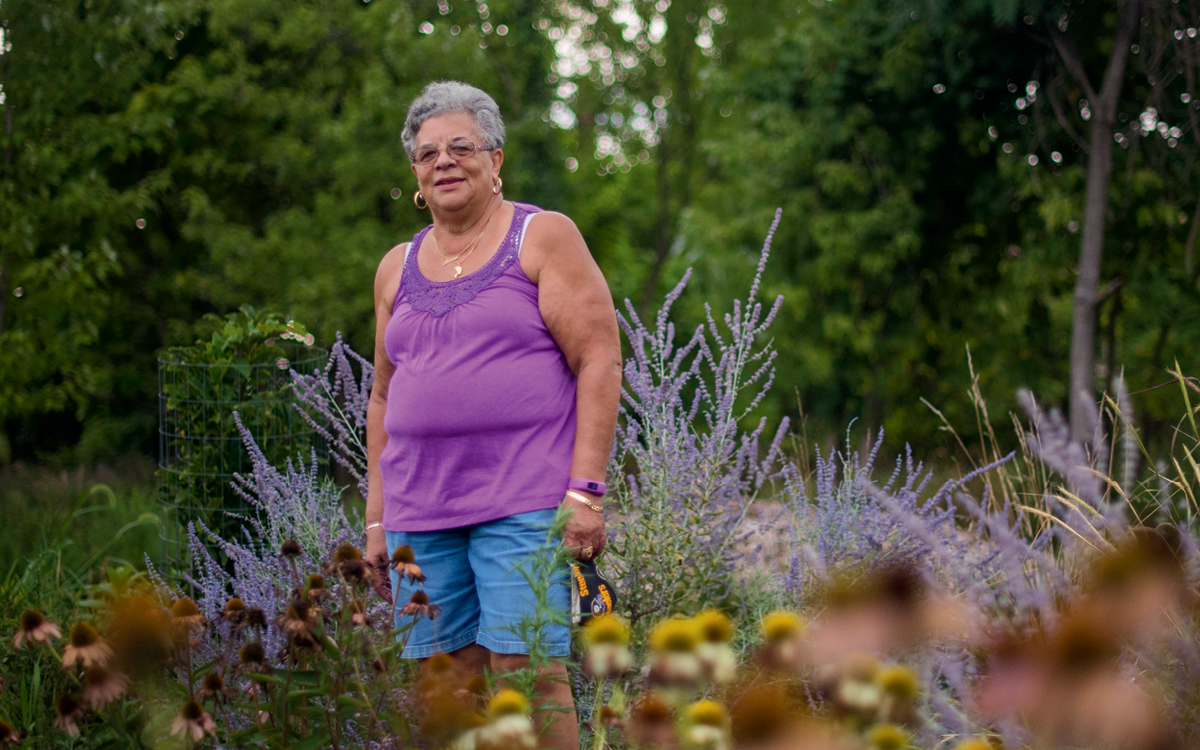
Zinna Scott has long advocated for redevelopment plans to boost sustainability and economic justice in Pittsburgh's Homewood neighborhood.
Scott called Duquesne Light, which told her to file a complaint. Scott filed a complaint. No response. Eventually, she gave up calling. The lamp remains dark.
In other neighborhoods, the situation is different. In East Liberty, a five-minute drive from Homewood, the streets leading to the old Nabisco factory are lined with brand-new LED lights. When asked if there were plans to replace the streetlights in Homewood, Grant Ervin, the city's chief resilience officer, responded that the light on Scott's block would be replaced in 2022—if it survived the budget process.
Scott was not impressed. "They should be all over the city. With better brightness, it would allow the seniors and those who work at night to feel safer walking down the street."
If the city replaced Homewood's streetlights, it would benefit not just the neighborhood but all of Pittsburgh. A life-cycle analysis put together by the University of Pittsburgh estimated that new LED lights would save the city $700,000 a year in maintenance costs and $1 million a year on electrical bills. They would also lower the city's greenhouse gas emissions, since 30 percent of Pittsburgh's electricity comes from coal and gas (nearly 70 percent comes from the Beaver Valley Nuclear Power Station, and less than 1 percent comes from the Patterson and Townsend hydroelectric installations).
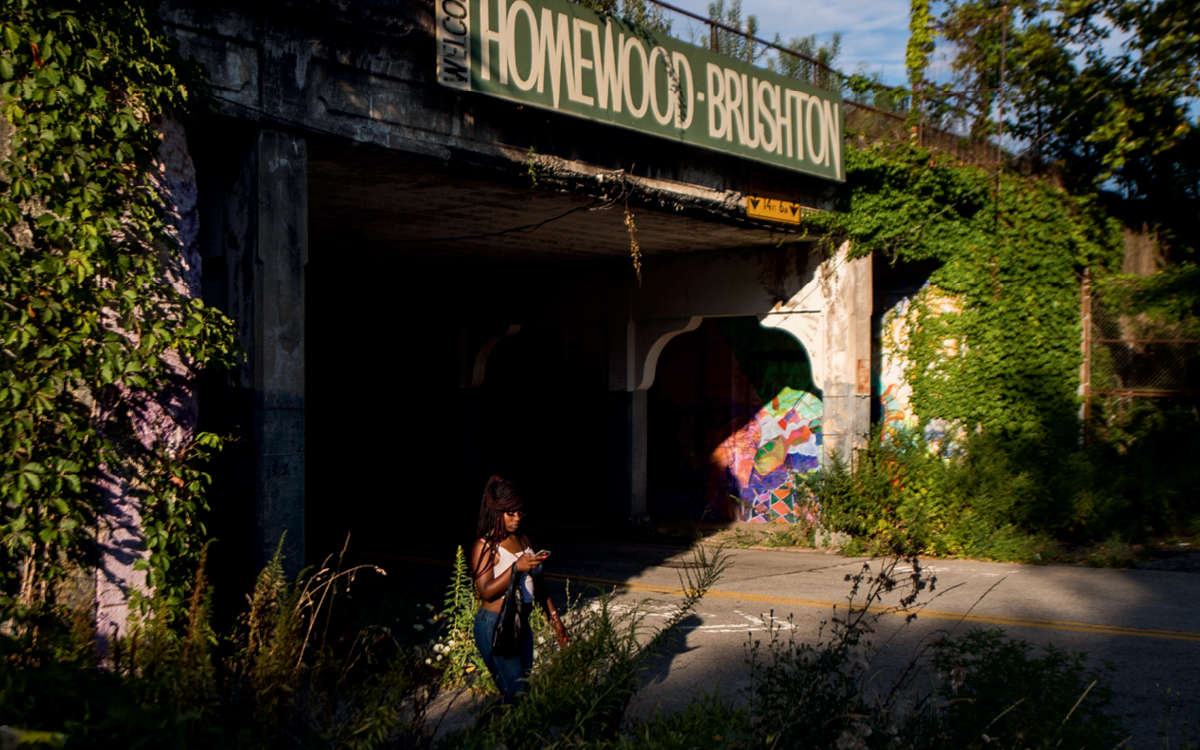
Amore Noel of East Liberty.
Pittsburgh—a former steel town in a state that is the second-largest fracked gas and third-largest coal producer in the country—is very public about breaking free from its reputation; the city is not holding onto its coal-powered industrial past. In 2017, President Donald Trump announced that he would withdraw the United States from the Paris climate accord because, as he put it, "I was elected to represent the citizens of Pittsburgh, not Paris."
Not so fast, replied Mayor Bill Peduto, the man who was elected to represent the citizens of Pittsburgh and who had traveled to Paris for the signing of the accord. "Pittsburgh stands with the world and will follow the Paris Agreement," Peduto wrote. The next day, the mayor issued an executive order pledging to fulfill Pittsburgh's climate goals.
It's not clear if Pittsburgh will meet those goals. The city's Climate Action Plan calls for dropping its greenhouse gas emissions to 20 percent below 2003 levels by the year 2023. But Pittsburgh's most ambitious emissions-reduction plans, like retrofitting city buildings to be energy neutral, haven't been implemented yet. The last time the city released data on greenhouse gas emissions, they had risen by 10 percent between 2003 and 2013. Part of the problem is that Pittsburgh—and nearly half of Pennsylvania—is on top of the Marcellus Shale. Cheap fracked gas has been a hard habit to break. A microgrid project that broke ground at the airport last July, for example, has solar panels that will produce three megawatts of electricity—and gas generators that will produce 20 megawatts.
In the absence of any real city action to mitigate climate change, the city's best hope lies in grassroots organizing in neighborhoods like Homewood. The things that poor communities have to fight for the hardest—like affordable housing and lower energy costs and the right to green space—also have a real effect on greenhouse gas emissions.
AT THE SAME TIME that Scott was trying to get the city to do something about her streetlight, she and several hundred other Homewood residents were planning out the future of the neighborhood. Beginning in spring 2014, they met at the Homewood YMCA and discussed everything about the neighborhood that could be different. They marked a map identifying streets and intersections they felt comfortable on and which ones they avoided. They talked about where they wanted more green space, where they wanted to see new housing, and what the best uses might be for the vacant buildings that dotted the neighborhood.
One motivating force was East Liberty, the neighborhood to the west with the new streetlights. The Nabisco factory, which had closed in 1998, was now home to a new Google office complex. The neighborhood had been profiled in a New York Times article titled "Slumbering Pittsburgh Neighborhood Reawakens."
But as old buildings were renovated and new housing was built in East Liberty, the number of Black residents fell. In the 2000 census, over 70 percent of East Liberty's residents identified as Black. By 2015, that number had fallen to 59 percent. Chris Briem, a regional economist with the University of Pittsburgh, estimated earlier this year that East Liberty has since flipped from majority Black to majority white. Or, as Briem put it, "it's raining (young and white) men in East Liberty." Black-owned businesses like the Shadow Lounge have closed, citing the pressures of neighborhood development. The year before it shut down in 2013, the hip-hop and spoken-word performance space had been targeted by anonymous zoning complaints. In 2018, the artist Alisha B. Wormsley was invited to contribute to an East Liberty art project called "The Last Billboard." Wormsley chose the message "There Are Black People in the Future." The landlord for the building underneath the billboard, a company called We Do Property, went up on the roof and removed all the letters.
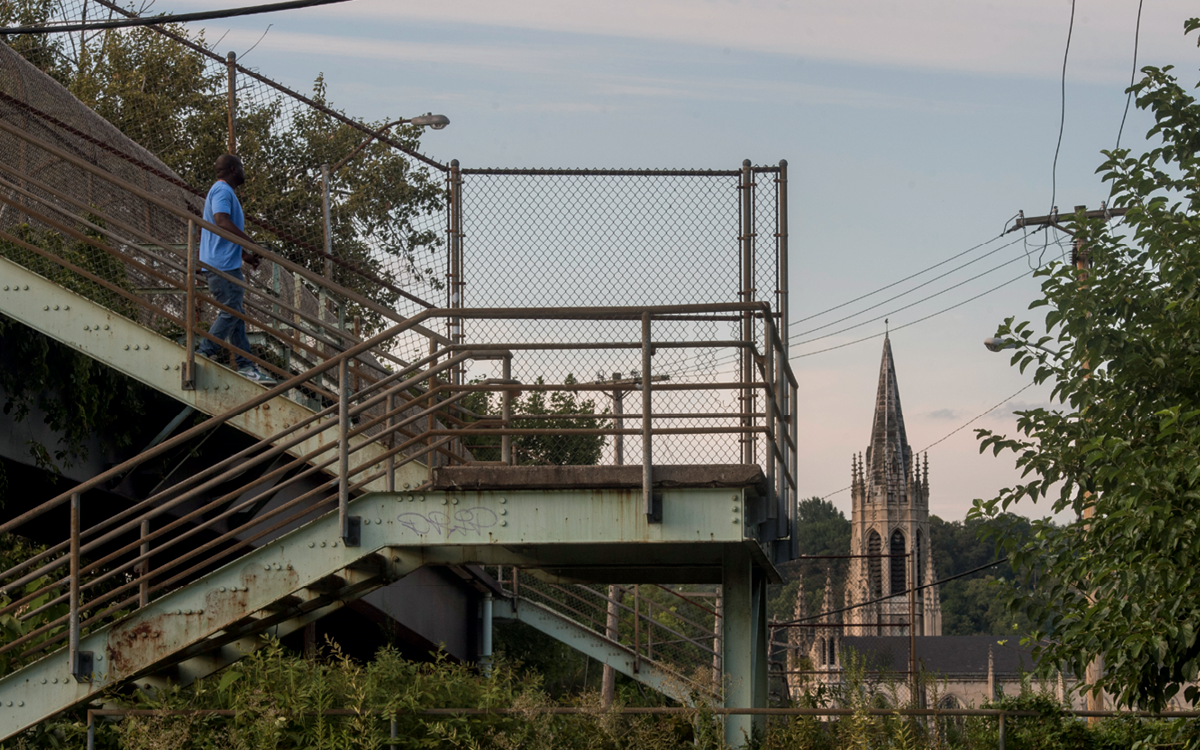
Ayodeji Young of Homewood.
Homewood has the highest percentage of Black residents of any neighborhood in Pittsburgh—around 90 percent. Scott remembers the Homewood of the 1960s as a thriving, working-class neighborhood. "Everything you'd need was right there on Homewood Avenue," she said. "It was a self-sustaining community."
In 1968, protests broke out across the city the day after Reverend Martin Luther King Jr. was murdered. For days, Homewood burned as residents expressed outrage and grief with the rest of the nation, mourning not only King but also the systemic injustices Black Americans had endured for decades.
Afterward, Pittsburgh's then mayor, Joseph Barr, allotted money to repair neighborhoods that were damaged by fires and looting—but none went to Homewood. "A lot of businesses, instead of rebuilding, moved to East Hills—the meat market, the shoe store," Scott said. "The businesses that burned never got built back."
In 1976, Scott bought a house in Homewood, a five-bedroom with a big backyard and lots of shade. She worked at Giant Eagle, a local grocery chain, moving up from meat wrapper to deli manager to bakery manager. Scott worked long hours when her kids were young, but she remembers how much fun they had. The kids played basketball on an improvised court with a hoop tied to a telephone pole. Every Halloween, she threw a big party in her backyard, and all the neighbors donated food. "My home became a safe haven. For years, there was never a meal without an extra kid at the table," she said.
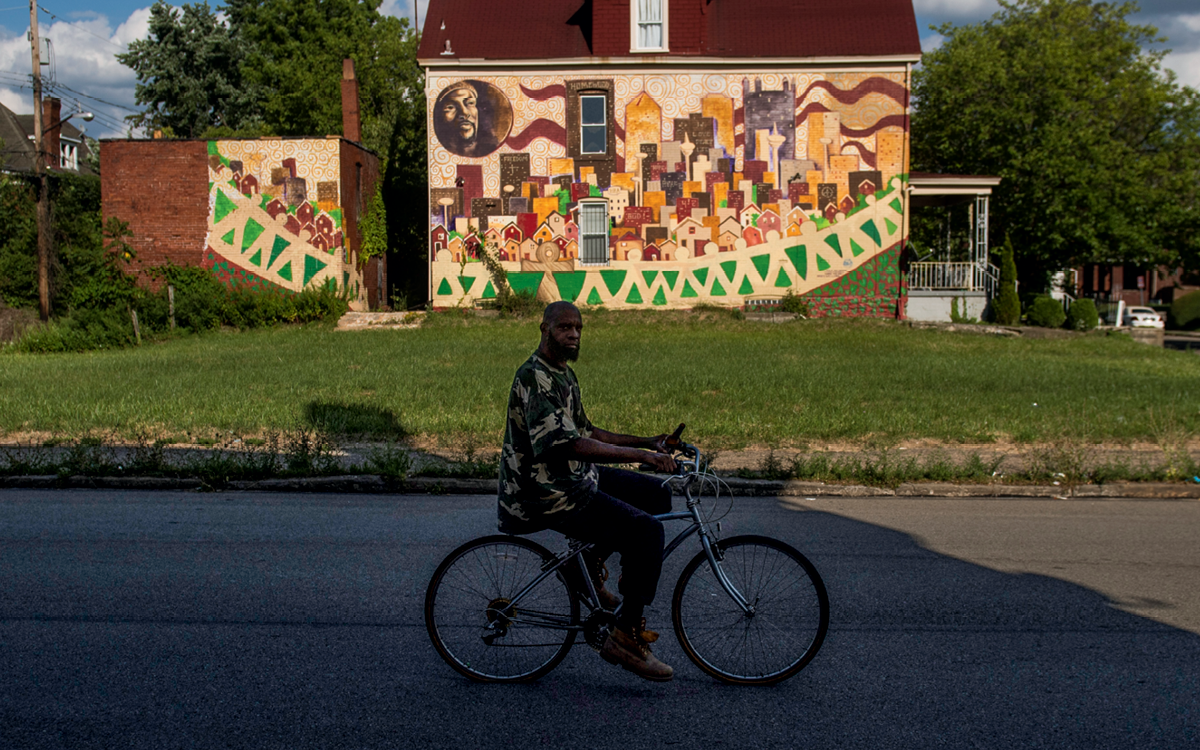
A man bicycles past a mural by local artist Kyle Holbrook.
In Pittsburgh, as in many cities across the United States, the 1970s were the beginning of tough economic times. Jobs that paid decent wages were increasingly hard to come by, and social services were being cut. Without access to a steady income or capital, many of Scott's neighbors struggled to keep up with repairs and property taxes. Some lost their life's work to tax forfeiture. Buildings sat empty, the vines grew, and the houses quickly became unsalvageable. Between 1950 and 2015, Homewood's population dropped from 34,000 to 6,500 (during this time, Pittsburgh as a whole lost almost half its population). Homewood now has more than 700 vacant lots.
HOMEWOOD RESIDENTS WANT trash cans and working streetlights and roads that get plowed in the winter. They want local jobs and a thriving business district. But they don't want to get those things only to find themselves and the community they built pushed out of their own neighborhood.
So, as residents continued to meet at the Homewood YMCA, they listed their priorities. The number one focus, by a wide margin, was housing. Sustainability came in almost dead last.
That housing came first was not a surprise. Across the United States, income inequality has widened. Very few people can afford rent on a minimum-wage salary, even in neighborhoods like Homewood, where the cost of housing is relatively cheap.
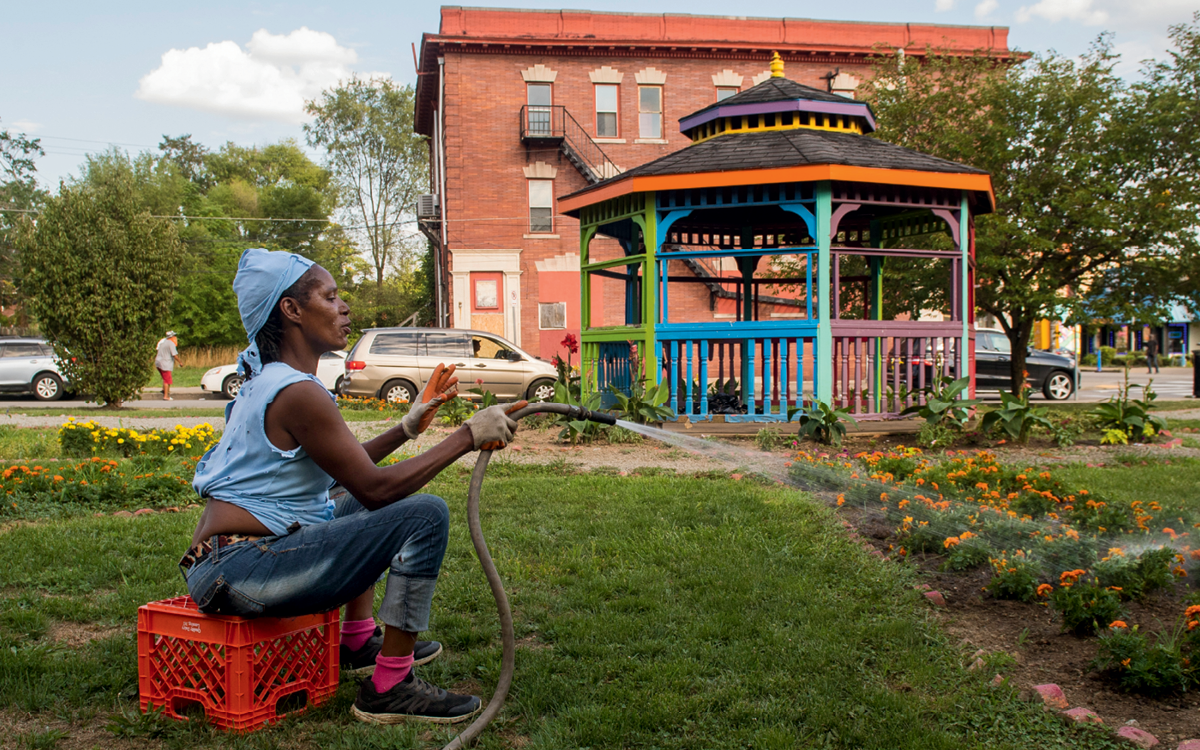
Kera Massey waters flowers in a small green space in Homewood.
But housing is also a sustainability issue. Utility rates in Pittsburgh are low, but utility bills in Homewood are high, because buildings are old (57 percent of the homes were built before 1939) and most have never been retrofitted with insulation or energy-efficient appliances. In winter, it's not uncommon for monthly heating bills to top $300, and, perversely, the poorest households often have the highest bills because they're the least able to afford repairs. A 2016 report from the American Council for an Energy-Efficient Economy and the Energy Efficiency for All coalition found that over 25 percent of low-income households in Pittsburgh spent an average of 16 percent of their income on energy bills (nationwide, the average is 3.5 percent).
Pittsburgh's Climate Action Plan states that a quarter of the city's emissions come from residential buildings. Half of the gas used within the city goes to heating homes. Rehabbing old buildings with insulation and efficient heating and appliances is one of the single most inexpensive and low-tech ways to cut greenhouse gas emissions. So retrofitting Homewood's residences, businesses, and community spaces would effectively cut emissions even without adding a single solar panel.
One day in the late 1970s, when Homewood's neglect by city trash-collection crews had become especially obvious, Scott spotted a group of people moving down her block, systematically bagging trash. They were volunteers at a local nonprofit, Operation Better Block. Faced with the neighborhood's struggles, the group had concluded that there was no reason not to start small. "I still have a garbage can they gave us," Scott said.
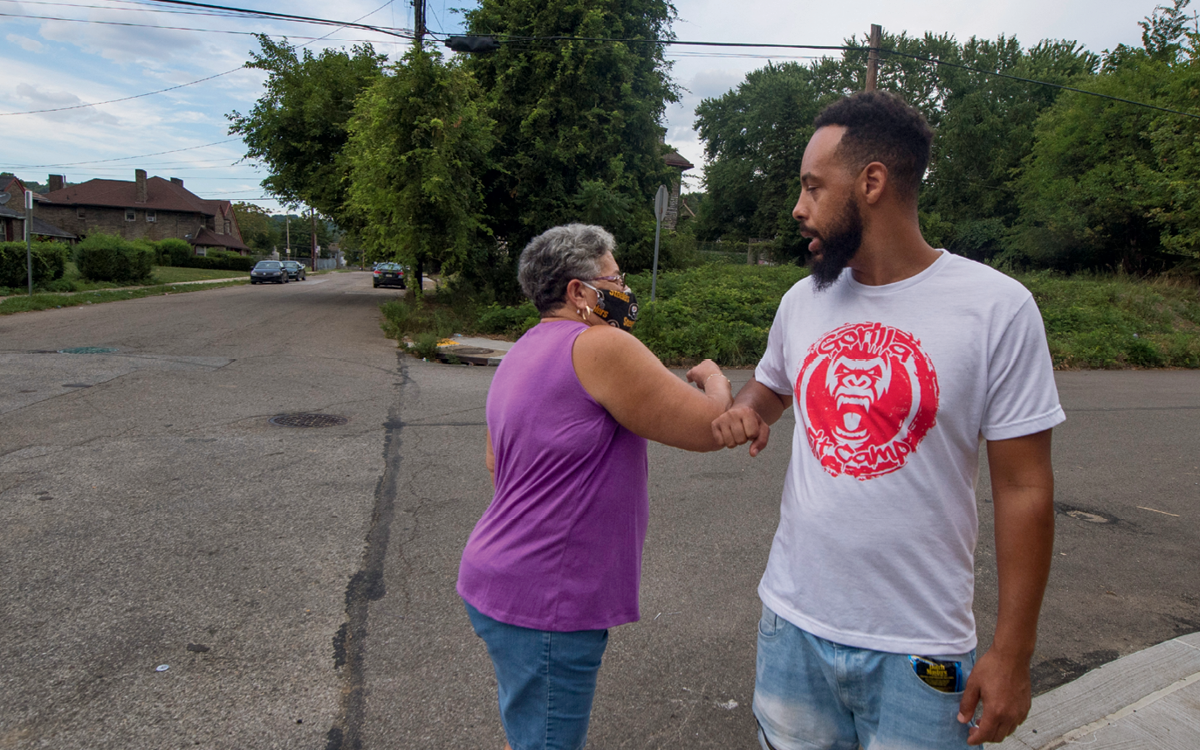
Scott greets a neighbor.
Scott had grown up in a community-minded household (her father, Amos Lynch, started the Ohio Sentinel, an African American newspaper in Columbus, Ohio). She quickly became involved with OBB—joining in trash-pickup efforts and raising money for a community snowblower.
Operation Better Block was one of many examples of grassroots community groups that emerged in Pittsburgh, and across the country, to fill the roles that city governments weren't willing or able to. Neighborhood coalitions set up food programs, legal assistance, after-school programs, and job training. They bought derelict homes and refurbished them as low-income housing and turned vacant lots into community gardens.
Those decades of community organizing are reflected in the pragmatism of the Homewood Community Plan, which was completed in February 2020 with the help of a long list of grassroots neighborhood groups, including OBB. One strategy laid out in the plan was to keep housing affordable, in part, by undoing some of the single-family zoning that Pittsburgh imposed in 1958 so that Homewood residents could once again legally earn income from ground-floor commercial space, convert their homes into duplexes, and build rental units.
Another strategy was to help low-income residents clear up title and property tax issues so they could qualify for energy-retrofit programs. And another was to convert vacant lots into permanent, rather than temporary, green spaces and to reforest the steepest parcels, where it would be prohibitively expensive to build. In July, the city planning commission formally accepted the Homewood Community Plan. Then the plan entered the final, current stage. How many of the dreams discussed at the YMCA can be turned into reality?
ON A JUNE DAY in the middle of the COVID-19 pandemic, Zinna Scott put on a face mask, opened her front door, and went out to see what was happening on her block. As she walked, she pointed out a historic building that never received protection from the city and eventually fell into ruin, a weed-filled lot owned by a health-care organization that had promised to build an office there, a vine that was attempting to pull down the telephone wires, and an urban farm in disrepair. She said that the farm was being minded by someone's cousin, who had stopped taking care of it. She planned to go on Facebook that evening and make sure that changed.
Across the street was an empty field of tall, green grass. Until last year, there had been a row of vacant houses there, still connected to live electrical wires. A fire had broken out. Several houses had gone up in flames. Scott wanted to campaign to rebuild on the site of the fire but couldn't decide what it should be. A park for kids? A soup kitchen? A health clinic?
On her way home, Scott saw something that made her light up—a new city trash can, right where she'd asked for it, by the bus stop where she'd been picking up garbage for years. A young man walked by, and she stopped and reached into her bag. "Do you have a face mask?" she called out. "I've got extras if you need them!"
This article appeared in the November/December 2020 edition with the headline "A Better Block."
 The Magazine of The Sierra Club
The Magazine of The Sierra Club



